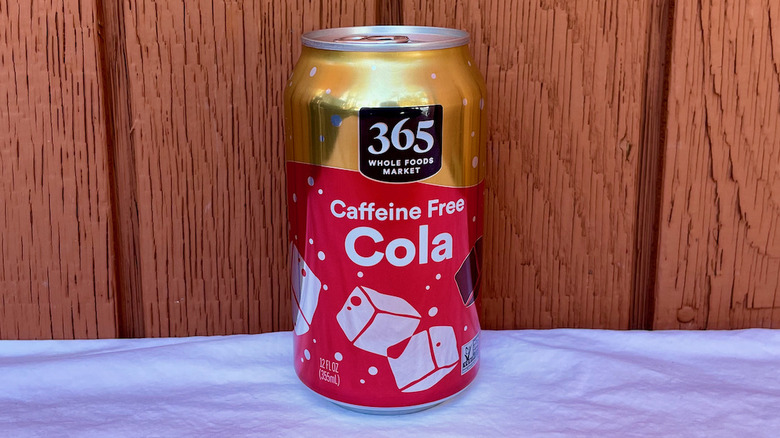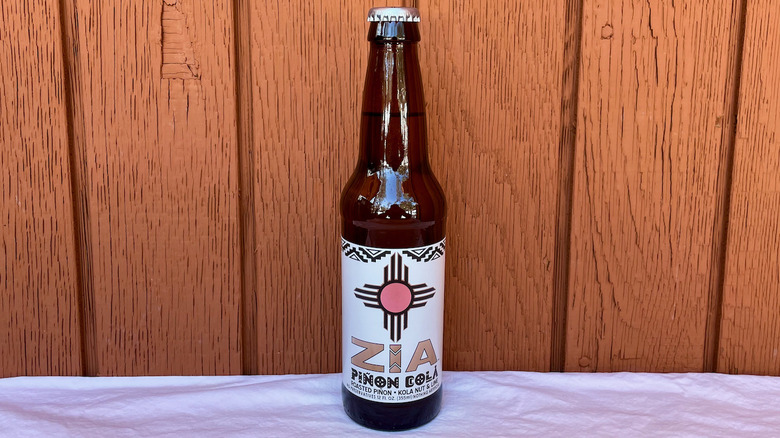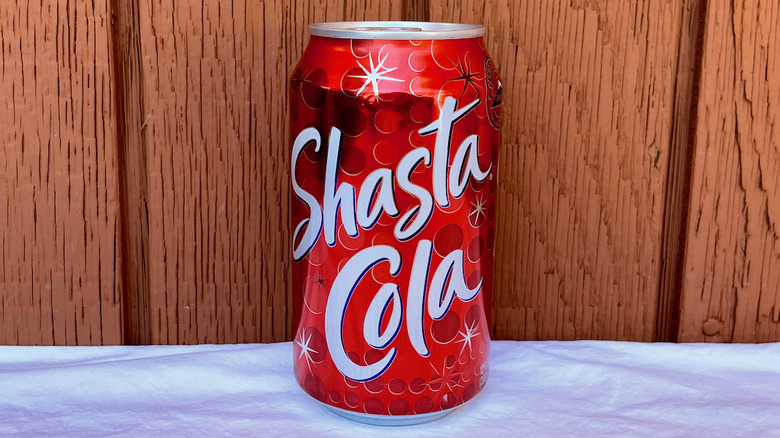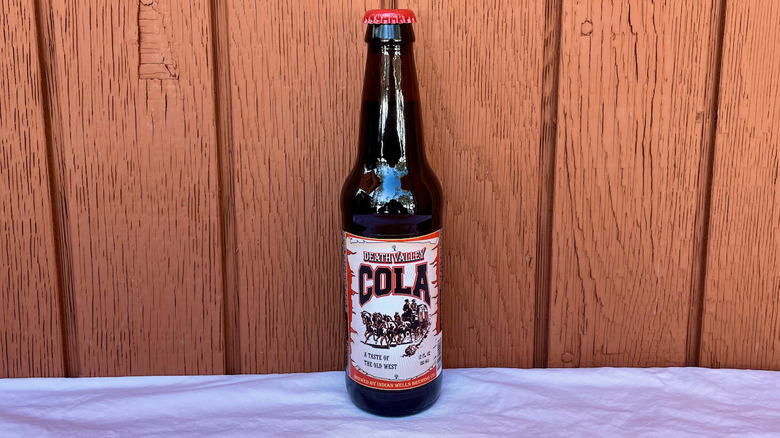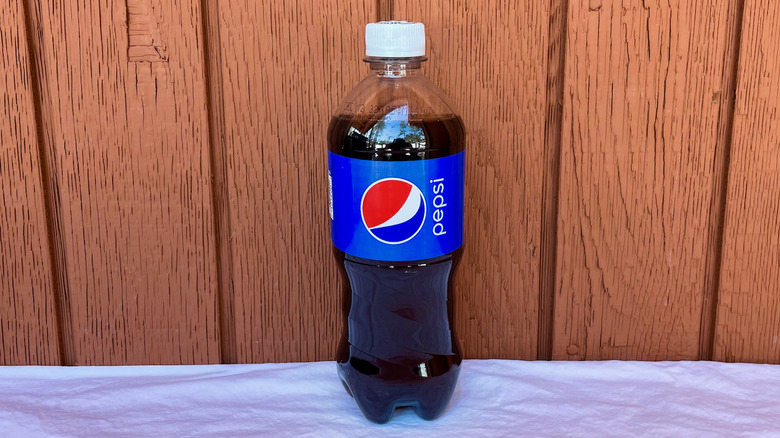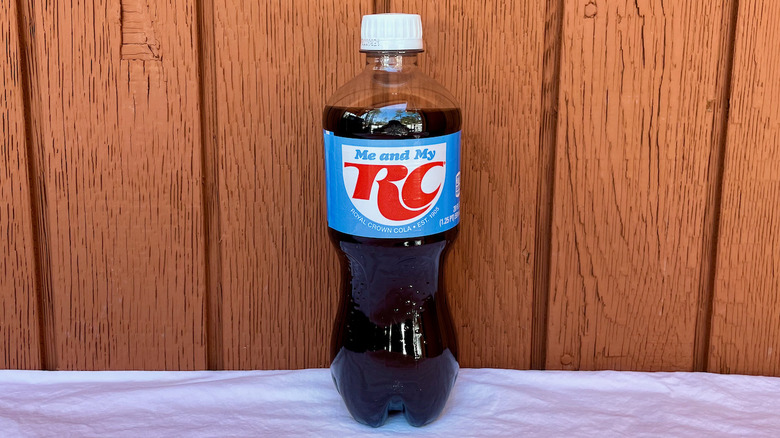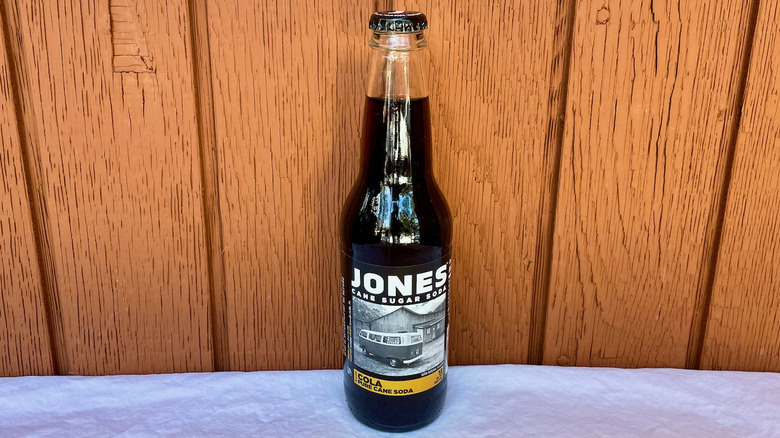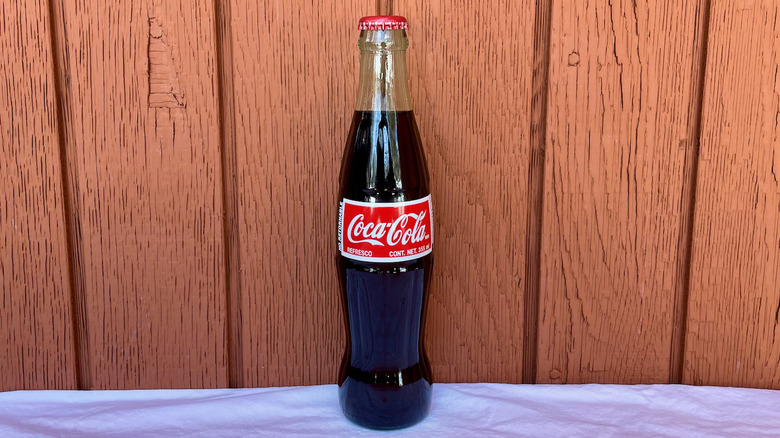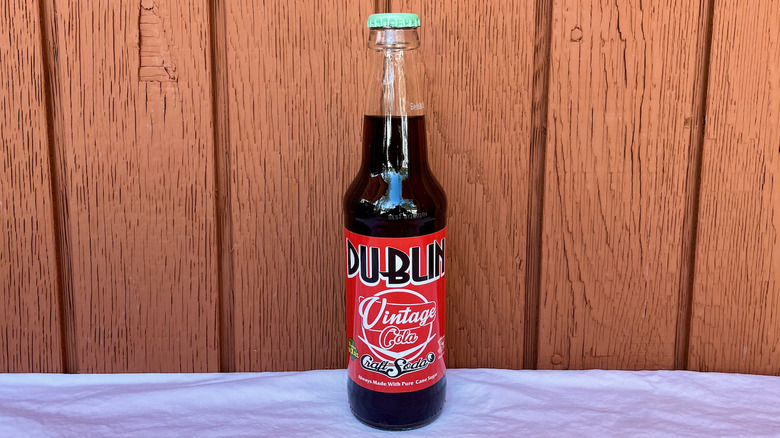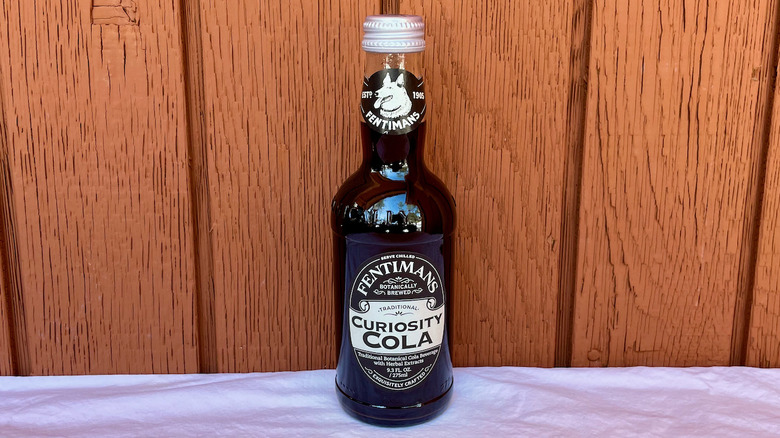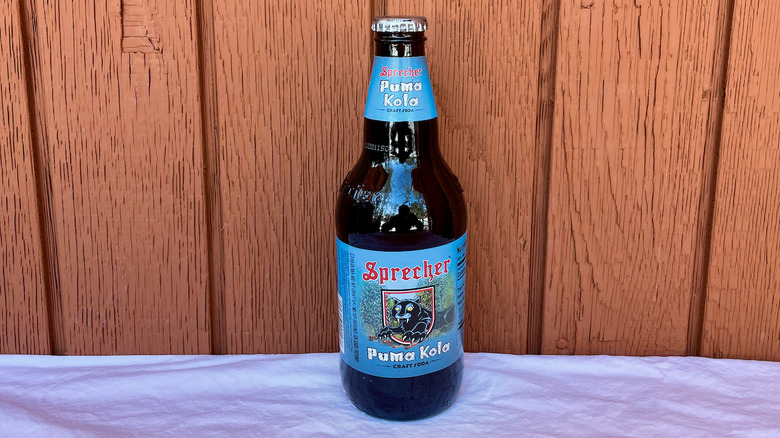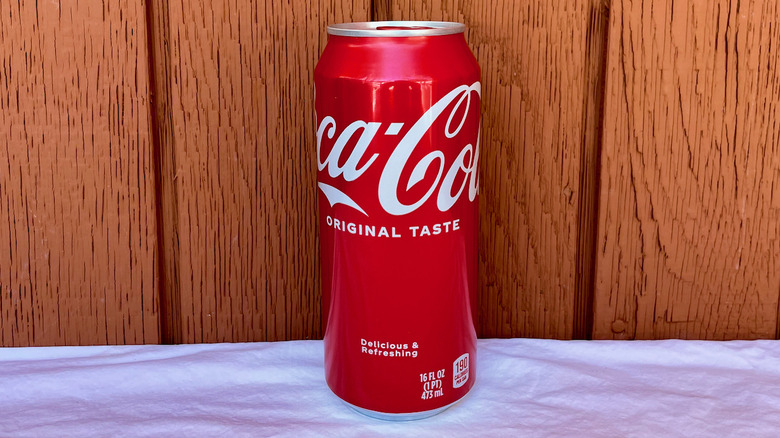12 Popular Colas, Ranked Worst To Best
Cola is the most popular soda flavor in the world and one of the most mysterious. Ginger ale tastes like ginger, and lemon-lime soda tastes like citrus fruits, but what exactly is cola supposed to be? It gets its name from kola nuts, which provide caffeine as well as some flavor, but the taste of most colas is a blend of vanilla, various citrus extracts, and spices like cinnamon and nutmeg (via Sparkling CBD). We have a recipe for homemade cola that follows this basic structure but adds allspice berries to the formula for a unique twist. There are a lot of components in cola, and each manufacturer uses slightly different ingredients in different ratios in pursuit of a specific taste.
For many people, cola preferences are just a matter of choosing whether you like Coke or Pepsi more, but there are a bunch of artisanal craft colas on the market these days, as well as brands like RC and Shasta that are quite large but just not Coke or Pepsi-level huge. We assembled as many popular cola varieties as we could find and made them duke it out in a head-to-head taste test to see which one would take home the cola crown. Would a handmade, boutique cola win, or does modern American industrial manufacturing produce a superior soda? You'll have to keep reading to find out.
12. 365 Caffeine Free Cola
In our ginger ale taste test, Whole Foods' house brand performed quite well, so we were excited to try its cola (even though we could only find the caffeine-free version, which wasn't our first choice). 365 Caffeine Free Cola is sweetened with inverted cane sugar rather than high fructose corn syrup, which is something we associate with high-quality craft sodas. However, we learned that Whole Foods' ginger ale game is much stronger than its cola game.
The smell of this product is promising, with big hits of vanilla and turbinado sugar. You get those notes when you sip on this soda, but not much beyond that. Cola is a tricky soda flavor to nail because it has so much going on compared to something simple like ginger ale. With ginger ale, as long as you get a robust ginger flavor, you're good. A cola has to balance many more components. 365 Caffeine Free Cola lacks the depth of other brands, leaving you with something that tastes good but is a little overly sweet and one-note. The aftertaste brings in a hint of bitterness that could work in a more complex drink but feels out of place in this context. This soda won't disappoint you if you're at Whole Foods and want to grab a few cans of something, but its weaknesses stand out when compared back-to-back with stronger colas.
11. Zia Piñon Cola
We'll say this about Zia: The New Mexico-based beverage company takes big swings with its flavors. We love that the brand incorporates local tastes into its beverages, whether that be red chile in its ginger ale or roasted pine nuts in its cola. We also appreciate that Zia Cola is actually made with kola nuts, the namesake of cola soda. Zia's experimental approach to soda making is risky, as it invites the risk of creating beverages that are too far from what we expect when we crack open a cola. We'd say that Zia Piñon Cola is a mixed success.
The first thing you notice about this drink is that it pours clear because it doesn't have a caramel color. It was the only clear cola available in our area (RIP Crystal Pepsi). While most colas have some citrus oil notes in their flavor, they usually play a supporting role. This cola bucks convention by bringing lime juice to the foreground. It has a strong limeade character but still manages to taste like cola. As if that weren't enough flavor already, the roasted pine nuts also make themselves very apparent. They bring toasted nut flavor of course, but also smokiness and a bitterness that's almost a bit like detergent (not in a bad way). We think you'll either love this soda or hate it. We wouldn't drink it every day, but we admire its ambition.
10. Shasta Cola
We always thought Shasta was some kind of generic supermarket brand of soda since it's noticeably cheaper than other brand-name drinks and makes a number of blatant knockoffs of famous beverages (we're looking at you, Mountain Rush and Dr Shasta). Surprisingly, it's actually an independent beverage company that started back in the late 1800s. Its name comes from California's Mt. Shasta, which has a spring that was the source of the company's first product: natural spring water (via Thrillist). That's a fairly fancy pedigree for a budget pop brand — Shasta has just as much history as Pepsi, Coke, or RC. These days, in addition to cola, the brand produces an impressive variety of sodas, including unique flavors like kiwi-strawberry, raspberry creme, and cherry-lemon-lime.
Shasta Cola wasn't our favorite cola we sampled for this test, but it can't be accused of being boring. It has an acidic, bitter, almost medicinal aroma with a dominant citrus oil presence. It tastes like it smells, with an astringent citrus rind-like flavor that cuts through the inherent sweetness of the soda. It's so citrus-forward that it almost tastes like lemon-lime soda mixed with cola. There's a kind of soapy quality to the flavor that's pretty strange, though not entirely unpleasant. If you want a normal-tasting cola, this isn't it, but it's a nice change of pace. Shasta also has a very good mouthfeel — it's heavily carbonated, so it doesn't seem syrupy on the tongue at all.
9. Death Valley Cola
To us, Death Valley Cola tasted like the artisanal version of Shasta. It's made with nicer ingredients — artesian spring water from the Indian Wells Spring and cane sugar rather than high fructose corn syrup — but the overall vibe is similar, with an herbal, soapy bitterness that complicates the drink's sugary nature. Death Valley does taste a little bit more like a conventional cola than Shasta, with more noticeable vanilla and caramel flavors. It's more complex than Shasta overall as well; its bitterness is deep and multifaceted, with floral, woody notes. Some sips had a pine tree-like flavor, while others sort of reminded us of birch beer.
Sometimes, sodas made with cane sugar can taste too much like straight sucrose. The sugar can overwhelm everything else. That's not a problem with Death Valley Cola. Actually, our main (minor) complaint is that the bitter tastes in this beverage are just a little too assertive. If you can get over the strangeness of drinking a beverage named after what is famously one of the driest places on earth, this is an enjoyable craft soda.
8. Pepsi Cola
We're sorry Pepsi fans: We know you probably want to see your favorite cola ranked highly on this list, but we just don't think it deserves it. Pepsi isn't bad by any means; it's actually quite tasty. There are simply some better colas out there.
Pepsi hits hard with vanilla in its aroma. It definitely smells and tastes quite different from its mortal enemy, Coke. It's one of the more acidic colas we tried for this test, with a notably sour and bitter aftertaste. Despite this, it doesn't taste citrusy like Shasta or Zia. It also somehow seems much sweeter than some other colas, even though it has about the same amount of sugar (or in this case, corn syrup) as any other soda. This is a case where the sweetness takes a hammer to the other flavors in the drink, making it difficult to perceive the nuances of the non-sugar components. We couldn't taste the vanilla in Pepsi nearly as strongly as we could smell it.
In addition to the intense sweetness, Pepsi also has a unique taste that we didn't notice in any other soda we tried. It reminded us of the taste of ice cubes, or the way the inside of a freezer smells. Somehow this freezer taste works with the sweetness and acidity of Pepsi to create a pleasant beverage, but Pepsi doesn't have the intricate, expertly-balanced layers of flavor that our preferred colas do.
7. RC Cola
RC Cola (or Royal Crown Cola if you're being fancy) always seemed to us like the sad third brother in the Cola Wars. It's been around forever, but it's not even close in popularity to the big dogs Pepsi and Coke, which are the No. 2 and No. 1 most valuable beverage brands in the world, per Beverage Daily. RC isn't even in the top 10.
Nevertheless, it has devoted fans, and we can see why. Smell-wise, there's not much going on, only mild hints of citrus and cinnamon. The flavor delivers on those hints in a big way, with a strong emphasis on sweet citrus and cinnamon kick. Compared to its competitors, RC emphasizes caramel and vanilla much less. It's not quite as acidic as Pepsi but more sour-tasting than Coke. In terms of texture and mouthfeel, RC is the flattest cola we tried. Normally we hate flat soda as it becomes excessively syrupy and cloying, but for some reason, the smoother texture really works for RC. If soda popularity was based solely on taste, RC would outsell Pepsi, but that's not the world we live in. RC will continue to be the alternative cult favorite embraced by a select few who know what's up.
6. Jones Cola
Jones is a craft soda company that's known for making off-the-wall limited-edition flavors like turkey or key lime. However, the brand also has a solid lineup of cane sugar-sweetened sodas in classic flavors, including cola.
As experimental as some of Jones' offerings are, its cola is quite conventional — and that's not a bad thing. It had the most caramel-heavy scent of anything we tasted, and its flavor is dominated by caramel and vanilla. While some alternative cola brands seem to be trying to imitate Coke, Jones tasted to us like a higher-quality riff on Pepsi. It had that same sugar-forward hit and high level of phosphoric acid sourness but was more interesting and well-balanced than Pepsi. In addition to the sweetness, we could detect a complex spice character in Jones Cola. We're not exactly sure what it was (perhaps nutmeg or cloves?) but it made this drink more than a one-trick pony.
5. Mexican Coca-Cola
The cult of Mexican Coke is strong. For those who think Coca-Cola just hasn't been the same since it started being made with high fructose corn syrup, cane sugar-sweetened Mexican Coke offers an opportunity to go back to the past. It also comes in nifty retro glass bottles that add something special to the experience.
We've historically been on team Mexican Coke, but we were curious to try it back-to-back with its American sibling to see if it actually tasted different or if its reputation was purely based on hype. The results shocked us: Mexican Coke definitely tasted different from American Coke, and we preferred the American corn syrup stuff.
Mexican Coke's aroma is heavy on cinnamon, with a little caramel to round it out. It seems to be more carbonated than American Coke and has a thinner texture. While we thought that corn syrup Coke would taste sweeter and less nuanced than cane sugar Coke, we found the opposite to be true; Mexican Coke's flavor was dominated by sugary caramel in a way that put a damper on the other flavors. It was delicious, but we wished we could pick up more of the vanilla and cinnamon components of the drink when we sipped it.
4. Dublin Vintage Cola
Dublin Vintage Cola is produced not in Ireland, but in a town called Dublin, Texas. Dublin Bottling Works has been around since 1891, so this soda has some serious history. It's packaged in clear glass bottles that highlight its beautiful reddish color. This drink has more aesthetic appeal than some of the dull brown colas it's competing with.
We're not sure how Dublin did it (Corporate subterfuge? An intense process of reverse engineering?) but the cane sugar-sweetened Dublin Vintage Cola tastes almost exactly like Mexican Coke. As such, it really delivers on its retro cola promises. Its taste is dominated by notes of brown sugar and caramel that blend nicely with everything else happening on the palate. We're giving it a slight edge over Mexican Coke because it's made by a small independent company instead of a huge multinational corporation and because it has a slightly more prominent vanilla flavor.
Although this taste test is based on each brand's regular cola flavor, we also have to shout out Dublin Red Cola, which tastes like a 50/50 blend of Coke and Texas-favorite Big Red soda without being overly sweet. If you're able to get your hands on a bottle of Red Cola, don't hesitate to try it — it's a unique treat with Texas flair.
3. Fentiman's Curiosity Cola
As its name suggests, Fentiman's Curiosity Cola isn't just another Coke imitator. Besides Zia, it's probably the most inventive of the colas we tried. We think Fentiman's does a better job than Zia at incorporating its innovative twists without going too far into weird territory.
The second ingredient on the Curiosity Cola label, right after carbonated water, is fermented ginger root extract. This seems to be the strongest flavor in the drink. It tastes gingery, but not at all like ginger ale — the fermentation process completely transforms the character of the root. You get some woody bitterness, as well as a yeasty taste that almost makes this beverage taste alcoholic. It's unlike any other cola, and yet it doesn't deviate too far from the flavor you want from a drink marketed as cola. The supporting players, like cinnamon, help reinforce the cola character of this beverage.
Overall, this drink balances creativity and refreshment exceptionally well. Its savory, spicy, bitter edge makes it interesting, but there's enough sugar to make it pleasant to drink and not too challenging. We bet the deep botanical flavor of this British cola would play well with boozy mixers to make refined Cuba Libres or whiskey colas too.
2. Sprecher Puma Kola
Wisconsin-based Sprecher's sodas are unique in a couple of ways: They're fire-brewed and flavored with local honey. When we tried the brand's ginger ale, we could really taste the smokiness from the fire-brewing process, but in Puma Kola, the honey comes to the fore instead. The typical cola notes of cinnamon and vanilla reinforce the honey flavor, making it really pop out. The honey adds sweetness, but it also has slightly bitter and even buttery undertones. This all adds up to a sugary but complex drinking experience.
As the "k" in Puma Kola's name would suggest, this drink is made with kola nut extract, but to be honest, we're not sure what kola tastes like by itself, so we can't say for sure what this ingredient is doing for the drink. Puma Kola is one of the sweetest colas out there, but it has enough herbaceousness and acidity (perhaps from the yucca extract in the recipe) that the sugar doesn't throw off the balance of the drink. We also loved the brand's Cherry Kola, which is even sweeter (it has a truly frightening amount of sugar in it). The turbo-charged sweetness works in the context of a cherry soda, however, and the cherry flavor is perfect. It's quite cherry-forward, but without tasting like medicine.
1. American Coca-Cola
Do you think it's boring to say that regular old Coke is the best cola on the market? Too bad, because for our money, Coke is still the king of colas. When comparing the smell of American Coke to Mexican Coke, we definitely picked up a corny aroma from the U.S. version, but that corn syrup scent didn't translate to the flavor. The taste is everything you want from a classic cola: crisp, clean, refreshing, and just the right amount of sweet.
There's a lot going on flavor-wise in Coca-Cola, but each component is blended perfectly so that it doesn't recede into the background or announce itself too loudly. If you concentrate, you can pick up the cinnamon, vanilla, and citrus, but together they just taste like one unified cola flavor. That's the genius of this drink, and why it's still the cola to beat.
As we mentioned, we thought we could pick up more flavor complexities from American Coke than Mexican Coke, and that's why it earns the top spot. However, we will say that the corn syrup definitely gives the American version a thicker texture that coats your mouth and sticks to your teeth. If that bothers you, look for a cane sugar cola, but for the rest of us, you just can't beat Coke.

